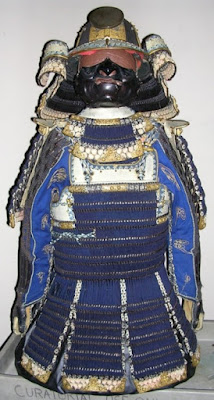As fall draws to a close, the weather gets colder and the days get shorter. For many of us, that means spending more time indoors. Two works in the Worcester Art Museum's collection by 19th-century French artist Jean-François Millet—the etching Woman Sewing (1855-1856) and the drawing The Vigil (about 1853)—use the domestic sphere as a way of reflecting the interior lives of their subjects.
In both artworks, Millet presents women working on needlework by ambient light from a candle or an open window. The works have a warm, familiar feeling that calls to mind late nights finishing projects, or perhaps a few hours of quiet time at home. Consistent with most of Millet’s work, these are romanticized images of daily life in rural France in the 1850s.

|
|
Jean François Millet (French, 1814–1875), The Vigil (Women Sewing), (about 1853), conte crayon on cream wove paper, Museum Purchase, 1962.38 |

|
|
Jean François Millet (French, 1814–1875), Woman Sewing (1855-1856), etching on cream laid paper, Miss Kingsmill Marrs Collection, 1926.1074 |
Born in 1814, Millet spent his childhood on a farm, making him familiar with the hard work agriculture entails. He was familiar with using farm tools and the physical exhaustion that resulted at the end of a long day. Millet was never a wealthy man. Rather, he garnered only modest success in his various enterprises and occasionally even struggled with poverty. During his teenage years he was sent away for artistic training that eventually led him to spend a few years living in Paris.
In 1845, Millet, his wife, and their nine children relocated to Barbizon, France, a rural community bordering the Fontainebleau Forest. There he became a founding member of the Barbizon school, a group of artists who focused on soft, romantic depictions of rural life and the landscape. The Barbizon artists promoted en plein air painting, or painting outdoors, in the hope of elevating the status of landscape painting to that of history painting and mythological subjects.
After spending his daytime hours studying the lives of farmers, in the evening Millet focused his attention on his wife and children. Requiring concentration and an attention to detail, sewing was largely considered women’s work. Women were expected to keep up with the needs of their family, which often equated to darning socks, mending pants, and making dresses.
Before electricity was common, this usually meant working long hours in low light conditions after spending the day on copious household tasks. Working solely by candlelight strained the eyes and hurt the back and neck from stooping over the work. In addition to necessary tasks, such as repairs, needlework also was seen as suitable amusement for women associated with their virtue and value. In a letter to a friend, one woman described the act of sewing as follows:
“[Sewing] fills up the interstices of time... It accords with most of the indoor employments of men, who... do not much like to see us engaged in anything which abstracts us too much from them. It lessens the ennui of hearing children read the same story five hundred times. It can be brought into the sick room without diminishing our attention to an invalid.”¹
In the mid-19th century, sewing was both a necessary task to maintain everyday attire and an opportunity for personal expression. It became a central activity for women regardless of class status. This was a common scene in the homes of farmers and Millet as well. Woman Sewing by Lamplight (1870-72) is another example of a work by Millet depicting a woman stitching (The Frick Collection, New York). In the didactic text accompanying the painting, curator Charles Ryskamp includes an excerpt from a letter by the artist, written the same year the painting was completed:
“I write this today, November 6th at 9 o’clock in the evening. Everyone is at work around me, sewing, and darning stockings. The table is covered with bits of cloth and balls of yarn. I watch from time to time the effects produced on all this by the light of the lamp. Those who work around me at the table are my wife and grown-up daughters.”²

|
|
Jean-François Millet (French, 1814–1875), Woman Sewing by Lamplight (1870-1872), oil on canvas (lined), The Frick Collection, Henry Clay Frick Behest, 1906.1.89 |
Today, worn socks and torn hems are more likely to be replaced or brought to a tailor for repairs. However, needlework and the fiber arts are still thriving in homes across the world. While they are pursuits still frequently associated with women, a growing number of men have taken up the fiber arts in the last few decades. Those who practice embroidery or knitting often describe the repetitive nature of these pastimes relaxing, practical, and rewarding. Some have used their talents to create fine art, and others use their work to make political statements, just as suffragettes once did with their embroidered sashes.
With winter looming upon us, now is as good a time as ever to take up a relaxing indoor hobby. Many fiber arts require few supplies to get started and YouTube tutorials are an excellent way to learn the basics of just about any form of needlework from crochet to dressmaking. As a head start, here’s a beginner cross-stitch pattern of a candle. Thankfully, electric lighting makes seeing our handiwork so much easier, but a candle serves as a reminder of centuries past.
Download the candle cross-stitch pattern
—By Gabrielle Belisle, Fellow for Prints, Drawings, and Photographs
November 18, 2020
__________________________________
¹ Letter from Mrs Trench to Mrs Leadbeater, May 1811 Thom, Danielle. “'A Stitch in Time: Home Sewing Before 1900' • V&A Blog.” V&A Blog, 25 July 2019, www.vam.ac.uk/blog/news/a-stitch-in-time-home-sewing-before-1900
² Source: Art in The Frick Collection: Paintings, Sculpture, Decorative Arts, New York: Harry N. Abrams, 1996.



















